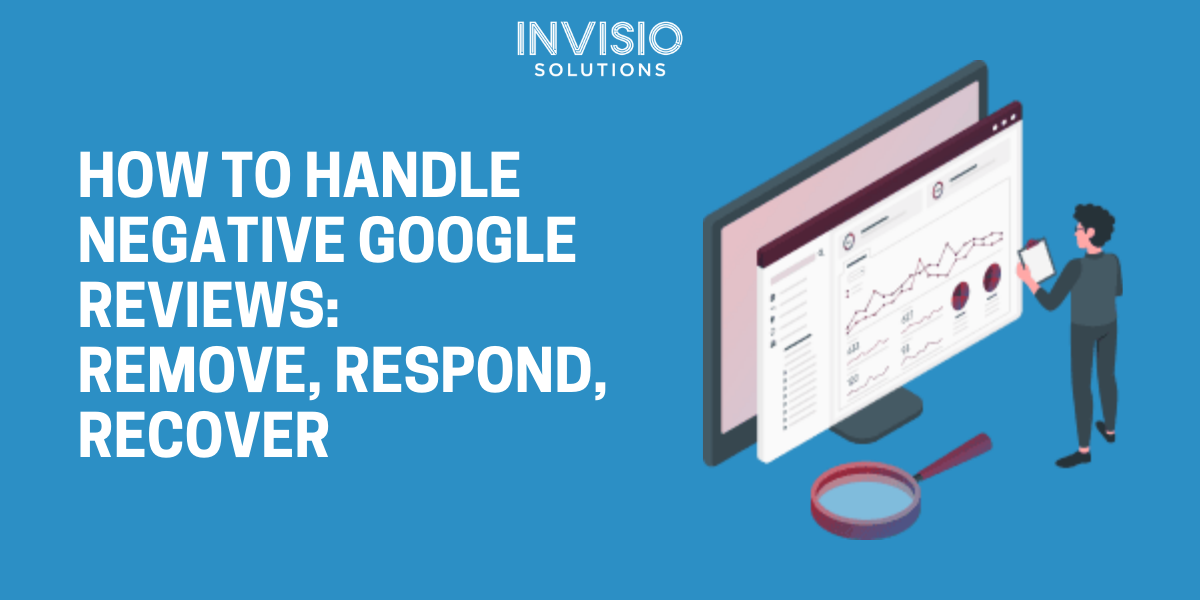


Google reviews are a critical factor in determining the success of any local business. Not only do they impact a company’s visibility in local search results, but they also play a significant role in driving foot traffic, generating leads, and shaping customer purchase decisions. A business with a strong portfolio of positive Google reviews is more likely to capture the attention of potential customers compared to one with fewer or lower-rated reviews. This is largely because modern consumers increasingly rely on reviews to gauge the quality of a service or product before making a purchasing decision.
Google Business Profile reviews are an essential ranking factor in local search engine optimization (SEO). The number of reviews a business has, along with its average review score, can significantly influence how prominently it appears in local search results. Businesses with higher ratings (typically 4 stars or better) are not only more likely to show up at the top of search results but are also far more attractive to prospective customers. This makes Google reviews a vital component of any local business’s online reputation strategy.
The weight of customer feedback cannot be overstated, especially given the fact that just one negative review on Google Business Profile can have an outsized impact on a business’s rankings and ability to generate leads. Negative reviews can deter potential customers from engaging with a business, leading to lost revenue and a tarnished reputation. Worse yet, since customers who have had negative experiences tend to be more motivated to leave reviews due to emotional responses, a single bad review can create a ripple effect that negatively influences future sales.
What makes the situation more difficult for business owners is the cumulative nature of review scores. Improving a business’s overall Google review rating by even a small margin (such as increasing from 4.0 to 4.1 stars) can be an uphill battle, requiring numerous new positive reviews to offset the damage caused by one or two negative ones. This difficulty is amplified by the fact that many customers are more vocal about negative experiences than positive ones, making it all too easy for a business’s review score to decline over time.
Because of this, many local business owners and SEO professionals are interested in finding ways to remove or mitigate the impact of negative Google reviews. However, the reality of removing negative reviews is not as straightforward as many hope. Google has clear policies around the removal of reviews, and businesses cannot simply delete or hide negative feedback whenever they choose. Reviews are meant to serve as authentic, user-generated content that helps other potential customers make informed decisions, and removing negative reviews purely for convenience would defeat this purpose.
That said, while businesses cannot arbitrarily delete unfavorable reviews, there are a few strategies they can employ to potentially have negative reviews removed. One option is to work directly with the reviewer, attempting to resolve the issue that led to the negative review in the first place. Another option is to report the review to Google if it violates the platform’s content policies. To help business owners navigate the complexities of managing their Google reviews, we have compiled a comprehensive guide that covers everything you need to know about Google Review removal and how to manage your online reputation effectively.
Before diving into the process of managing negative reviews, it’s important to clarify a common misconception: businesses cannot delete bad reviews on Google apps just because they want to. Google does not allow businesses to remove reviews that they simply disagree with or find damaging to their reputation. The platform’s primary goal is to ensure transparency and provide customers with honest, authentic information that can aid their decision-making.
However, while businesses cannot directly delete reviews, there are certain circumstances in which reviews may be removed. For example, reviews that are fake, irrelevant, or in violation of Google’s content policies can be flagged for removal. Businesses also have the option to work with dissatisfied customers, offering them solutions to their issues in hopes that they will either revise or delete their negative review.
In many cases, negative reviews stem from easily resolvable issues. Whether it’s a misunderstanding, a one-time service failure, or something as simple as an off day for the business, negative reviews often do not reflect the business’s overall quality or customer service. Fortunately, customers have the ability to delete their own reviews, which offers businesses an opportunity to resolve negative feedback through professional and courteous communication.
One effective approach is to directly address the concerns raised by the customer, apologize for any inconvenience caused, and offer a solution. Whether it’s offering a discount for a future service, providing a refund, or simply addressing the issue head-on, businesses that show genuine care and willingness to improve often see customers reconsider their negative reviews. Ideally, this resolution would result in the customer deleting their negative review and, in some cases, even leaving a positive one in its place.
Here are some strategies businesses can use to get customers to remove bad reviews:
The first and most essential step is to respond directly to the negative review on Google. Not only is this best practice for managing reviews in general, but it also shows potential customers that you take feedback seriously, whether it’s positive or negative.
When responding to a negative review, always remain professional, polite, and empathetic. Avoid any confrontational language, as it can further harm your business’s reputation. Acknowledge the customer’s feedback, apologize for the issue, and outline steps you are taking to prevent similar issues in the future. Taking responsibility for the mistake and offering solutions demonstrates your commitment to excellent customer service.
By responding in this way, you may encourage the reviewer to reflect on their emotional response and, possibly, decide to delete or revise their review.
Sometimes, responding publicly may not be enough to resolve the situation. In these cases, it can be helpful to provide the customer with a way to contact you directly. This could be a phone number or email where they can reach out to discuss their experience in more detail.
When customers feel that their concerns are being taken seriously, they are more likely to appreciate the effort and may even be willing to give your business a second chance. If you can resolve the issue through direct communication and improve their overall experience, they may choose to delete the negative review or replace it with a positive one.
Another tactic to win back unhappy customers is to offer some form of compensation, such as a discount or a free service. For example, if a customer leaves a negative review about a bad meal at your restaurant, you could invite them back for a discounted or complimentary meal to give you another chance. While businesses can’t directly incentivize customers to leave positive reviews, they can use this method to turn around a bad experience, increasing the likelihood that the customer will delete their negative review voluntarily.
It’s essential to note that this strategy should focus on making the customer’s experience right, not on explicitly asking for a positive review in exchange. The goal is to improve the customer’s opinion of your business so that they may choose, on their own, to update or delete the negative review.
If resolving the issue with the customer directly is not an option, or if the negative review violates Google’s content policies, businesses can report the review to Google for potential removal. It’s important to note that Google only removes reviews in cases where there has been a violation of their guidelines. Some examples of when a review might qualify for removal include:
On the other hand, Google will not remove reviews simply because a business disagrees with the feedback. Reviews that are based on actual experiences, even if the business disputes the details, do not qualify for removal under Google’s guidelines.
If you believe a review violates Google’s content policies, follow these steps to report it:
In cases where a business needs to flag multiple reviews, Google maps offers a Reviews Management Tool that allows users to report several reviews at once. Simply select the reviews to be flagged, choose the violation category, and submit the report.
There may be situations where, despite your best efforts, a negative review cannot be removed. In such cases, businesses can still take positive steps to manage their reputation by focusing on sentiment analysis. Sentiment analysis involves evaluating customer reviews to identify recurring themes, both positive and negative, that can help inform improvements in service. By addressing areas of concern and capitalizing on strengths, businesses can increase the likelihood of future positive reviews.
Tools like Local Falcon’s AI Reviews Analysis provide a quick and effective way to analyze both a business’s own reviews and those of competitors. This data-driven approach helps businesses better understand customer sentiment and make informed decisions to enhance the overall customer experience.
Traditionally, sentiment analysis involved manually going through reviews and identifying key themes. However, AI tools like Local Falcon’s AI Reviews Analysis can make this process much more efficient. With the AI-powered tool , businesses can instantly analyze their reviews and those of their competitors, generating actionable insights that can help improve customer experiences and reduce the chances of future negative reviews.
The AI tool also identifies opportunities for businesses to engage with customers they haven’t yet responded to, potentially opening the door for resolving disputes and improving overall sentiment.
Can businesses delete Google reviews?
No, businesses cannot delete reviews themselves. However, they can engage with customers to resolve issues and potentially persuade them to delete their good reviews or report reviews that violate Google’s policies.
How can I remove a review by engaging with the customer?
Respond professionally to the negative review section, taking full responsibility for the issue and explaining steps you’re taking to resolve it. You can also reach out to the customer directly to offer compensation or a chance to give your business another try.
When does Google remove reviews?
Google account will remove reviews that violate its policies, such as spam, fake content, offensive language, conflicts of interest, or harassment.
What if a review can’t be removed?
If a review cannot be removed, use sentiment analysis to identify patterns in customer feedback and make improvements to your business. Over time, generating more positive reviews will help mitigate the impact of any negative ones.
Managing Google reviews is an essential aspect of maintaining a business’s reputation and local SEO. While it may not always be possible to remove negative reviews, engaging with customers and using AI-powered tools like sentiment analysis can help businesses turn feedback into actionable insights. By addressing issues promptly, providing excellent customer service, and focusing on generating positive reviews, businesses can improve their overall rating and continue to thrive in the competitive local market.